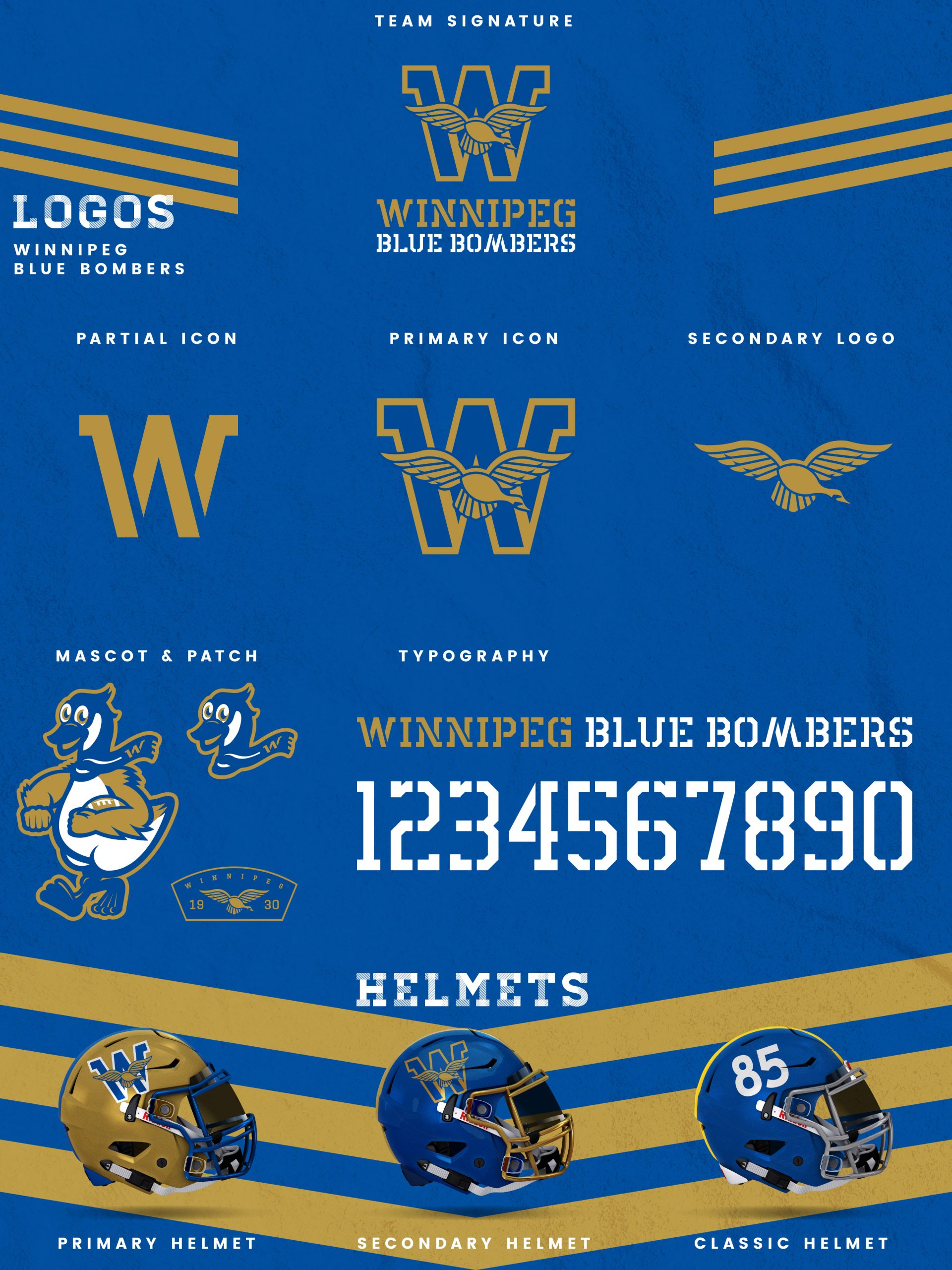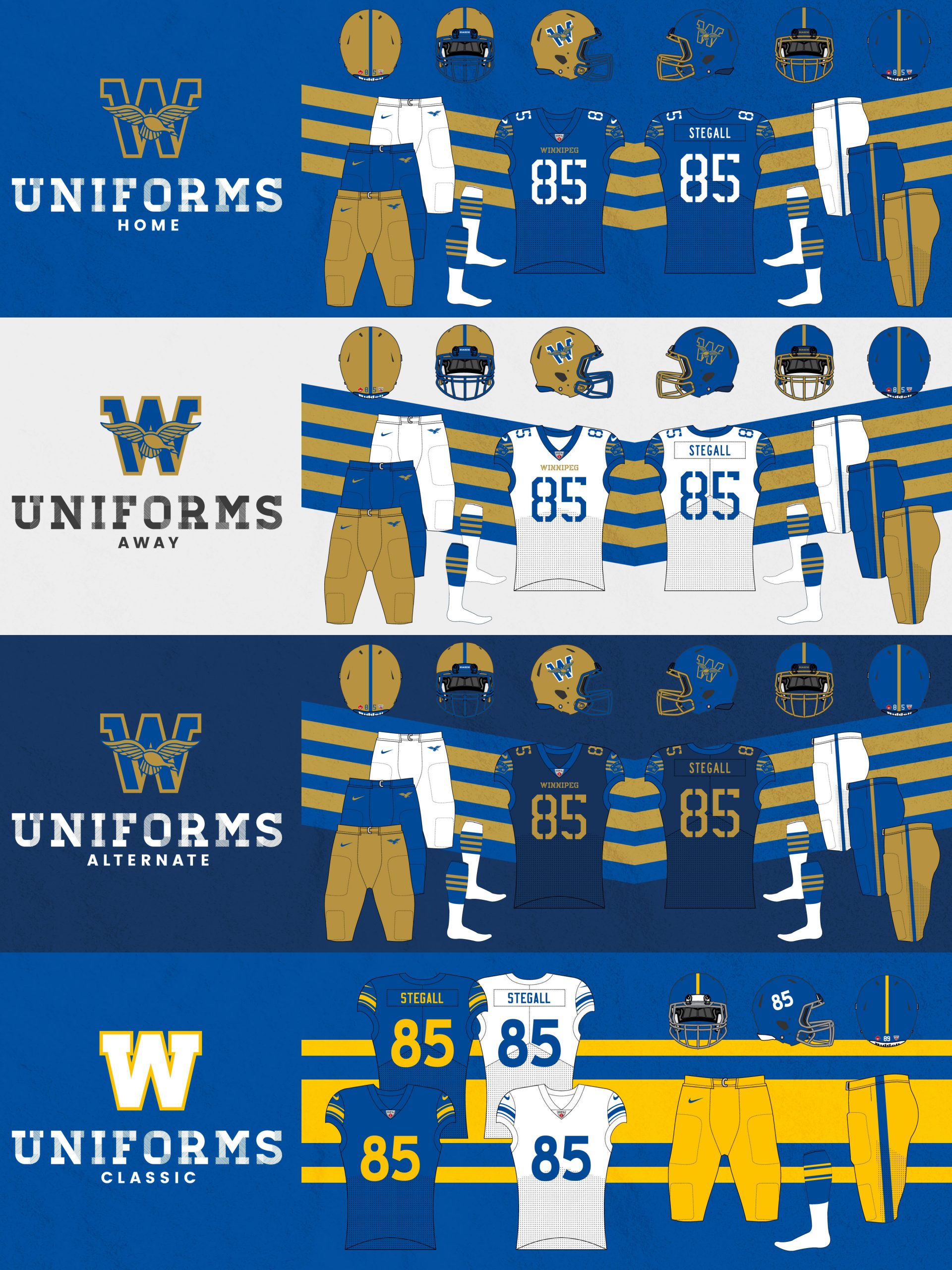Winnipeg Blue Bombers


Winnipeg Blue Bombers
Football in Winnipeg first took root in 1879 in the form the Winnipeg Rugby Football Club. By 1930 the team had merged with other clubs in Manitoba and the game was transitioning to become more football than rugby. 1935 was an eventful year, as Winnipeg won the Grey Cup and received the nickname Blue Bombers in reference to famous pugilist Joe Louis. From there the blue and gold scheme was set, including a phase in the late 1930s that conjured the Acme Packers. Through the 1950s and 60s, blue and gold meant royal blue and athletic gold, but the gold transitioned to metallic gold over the seasons. By the 1990s, the Bombers were navy blue and metallic gold, although royal blue returned in 2016.
My Winnipeg Blue Bombers redesign retains the royal blue and metallic gold and pays tribute to the Canadian Air Force. The primary icon places a Canadian Goose representing bravery, loyalty, and teamwork against a stencil block W, with the team name under it for the team signature. A simple stencil-W works as a partial icon, while the goose stands alone as the secondary mark. A patch modeled after the Canadian Air Force complements the other logos alongside mascot marks of a Canadian Goose wearing a scarf. The primary helmet stays metallic gold with a single royal stripe, while the secondary helmet inverts the two colors. The classic helmet is royal with an athletic gold stripe and the player number on each side. The royal home jerseys combine white numbers with a gold chevron pattern showcasing the patch on each sleeve. The white away jerseys use royal numbers and royal cap sleeves to maintain the appearance of the chevron and patch. The navy alternate jerseys also feature royal cap sleeves but with white type. The home, away, and alternate jerseys pair with metallic gold, royal, or white pants. The classic uniforms, for events such as the Labour Day Classic, recapture the style of the 1958 Grey Cup championship team in royal and athletic gold.
Date
July 28, 2020
Category
CFL, Football


